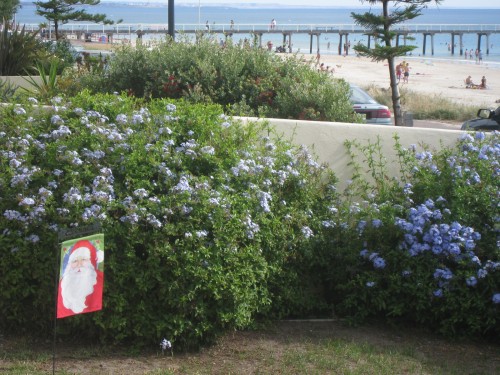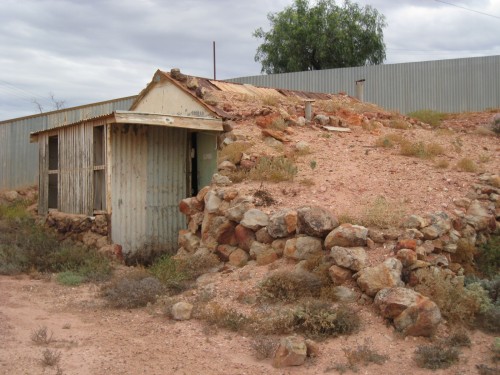Every time I revisit a place I’m provided with the opportunity to discover new things about it, become more familiar with it, and develop a greater understanding and appreciation for it. A natural outcome of this is that I develop a stronger attachment to that place. This has never been more apparent than during my recent revisit to Uluru.
When Sharon, Kelly and I visited Uluru in February, we participated in a guided walk with an Aboriginal guide, Sammy, who, among other things, shared with us the importance and significance of Uluru to the Anangu people. He explained to us that Uluru is, and has always been, a sacred place for his people. He told us that each special feature on the rock is a story linked to creation, left by their ancestors. As such, these physical features are equivalent to a sacred scripture. This has been passed down from their ancestors for as long as the Anangu have been there and continues to be passed on today from grandparent to grandchild. This is a part of what the Anangu refer to as Tjukurpa. (The video clip below will give you a better understanding of Tjukurpa than I ever could).
http://www.environment.gov.au/parks/publications/uluru/video/about-tjukurpa.html
The Anangu welcome visitors to their land and are pleased to help visitors understand more about their culture, and in return, ask that we, as visitors, respect their land, spiritual laws and culture. That includes not climbing the rock, Uluru. This message is also passed onto visitors through the Cultural Centre in the park and in the Visitor Guide that is handed out upon entering the park. This seemed like a very reasonable request to me, and perhaps, in my naivete, I just assumed that visitors to the site would honour and respect their culture and rules. So on that first visit, I really was unaware that this was even an issue for some.
http://www.environment.gov.au/parks/publications/uluru/video/we-do-not-climb.html
On this last visit, after reading and hearing the message again many times upon arrival, Stephen and I set out on our afternoon hike around the base of the rock. I was shocked to come across a point in the hike that had signs posted saying that the “..climb would be closed today..”, because of the recent rain, apparently making parts of the climb slippery. The mixed message that this sign gave off was totally baffling to me. It suggested that on other days, it would be just fine to climb the rock. To add insult to injury, I looked up at this point, to the wall of the rock in front of me, and could clearly see a worn path in the rock made from years and years of tourists climbing it. Even worse, installed alongside that worn path, were a series of metal posts drilled into the rock with a chain running down the length of the posts for climbers to hold on to. It got worse.
Walking along the base hike you come across marked areas that are designated as culturally sensitive sites with signs posted asking that visitors respect the significance of these areas by not taking any photos. Often times, the path around these areas will guide you slightly away from the sensitive area to further protect it. These are sites that are used for special ceremonies or rituals. I’m not sure that I am adequately conveying the importance and significance of the message that visitors are given, but if I am, try to imagine how utterly sick we both felt when we came upon a man climbing high up onto the rock, walking into the caves and filming the entire thing in one of these sensitive areas. We stopped and stared in disbelief and disgust. A tour operator came by, clearly distressed by it, and asked us if that man was with us. We assured him not, and he stood there waiting for the man to come down, taking a couple of photos of him so that he could be identified to park rangers. When the man finally did come down, he quickly headed off in the other direction, clearly in an effort to avoid the upset tour operator. The tour operator said to us, “That’s okay, the park ranger will be waiting for him further along.”
In my opinion, cultural reasons are significant enough reason to close the climb, but in addition, there are also safety and environmental reasons in support of an outright ban. More than 35 people have died attempting the climb and many more injured. Not only do these attempts put the lives of climbers in jeopardy, but it also puts the rescue workers who are called in to help, in a risky situation.
I’ve done some looking into the whole climbing issue since I’ve returned home. I am utterly stunned by the numbers of people who continue to climb the rock in spite of the Anangu’s request. The good news is that today, fewer people are climbing Uluru and in the last survey the park conducted, the general reason why people had chosen not to climb was to honour the traditional owners’ request and their desire to show respect for the Anangu people and their culture. The sad news is that it is estimated that there are still 38 % of visitors annually, choosing to climb. This is down from 74% in 1990. Interestingly, the report goes on to say that visitors from some countries are much more likely to climb than others, although it doesn’t state which countries these are.
The discussion around prohibiting the climb altogether continues to spark debate between tourists, politicians and the traditional land owners. The Anangu obviously would like to see the climb stopped. The importance of the tourist industry to the Northern Territory and a potential loss of revenue is what concerns the politicians. However, a recent survey conducted for a draft management plan revealed that 98% of people surveyed would not be put off visiting the area if they were not allowed to climb the rock. One recommendation of the plan was to institute a ban once the number of climbers was reduced to just 20%. Hopefully the numbers of climbers will continue to drop and at a more accelerated rate.
More and more work is being done to increase and promote cultural awareness among the general population with respect to Aboriginal culture and issues. These issues are very similar to those faced by our own First Nations people, and while much is being done, both countries have a long way to go. The link below is taken from a program called Interactive Ochre which was designed to present an Aboriginal perspective on the issues currently affecting Aboriginal people and present public knowledge concepts about cultural awareness.
http://learnline.cdu.edu.au/tourism/uluru/background/popquiz/newsflash.swf
When I visit Uluru in the future, my hope would be to see a full ban on climbing in place and for those posts and railings to be removed.
In the words of the Anangu, Palya!
Kathy
The following excerpts were taken from the Uluru-Kata Tjuta National Park Visitors Guide.
Welcome to Anangu land, welcome to our home.
“This is Aboriginal land and you are welcome. Look around and learn, in order to understand Aboriginal people and also understand that Aboriginal culture is strong and alive.”
– Nellie Patterson, traditional owner
Welcome to Pitjantjatjara-Yakunytjatjara Aboriginal land. We, the traditional owners of this place, call ourselves Anangu, and would like you to use that word too.
Our Anangu culture is World Heritage listed as one of the world’s oldest human societies. Our land is home to one of Australia’s most famous natural landmarks, also recognised as World Heritage for its natural beauty.
We welcome people from around the world to visit Uluru and Kata Tjuta and be inspired by these living wonders of creation. Together with many other places, animals and plants, this area is home to our sacred sites and very important to us.
The landscape in and around Uluru–Kata Tjuta National Park is the result of nature and Anangu working in harmony. We have managed this landscape for thousands of years using laws handed down to us by Tjukuritja (creation ancestors). The marks they left in the land, also called Tjukuritja, show us the laws which were made for us to keep and live by. We call this law Tjukurpa, and to this day we manage the Park Tjukurpa katutja ngarantja, (Tjukurpa above all else).
Since the land was returned us in 1985, we have been working together with the Director of National Parks to care for this place, in a process known as ‘joint management’.
We hope you learn about the many animals and plants here, as well as getting to know the beautiful landscape, learning about some of the Tjukuritja, our Tjukurpa, and our Anangu way. Please respect this knowledge and open your minds and hearts, so you can really appreciate our enduring culture.

Not a great photo, but if you look carefully against the clouds you can see the posts and railing. On the top part of the rock you can make out the worn path. On the bottom left are plaques left by family members recognizing climbers who had died on the rock.
























































